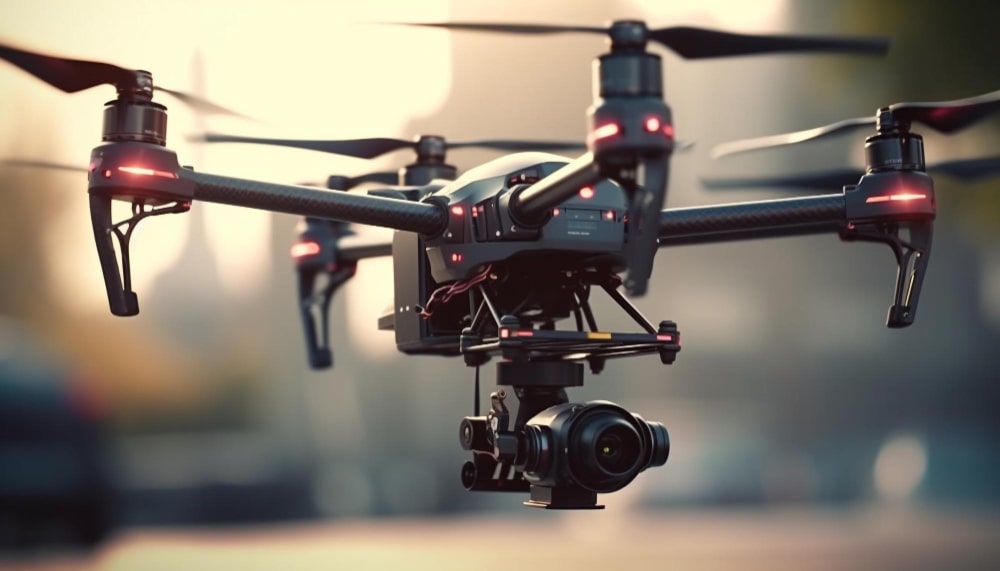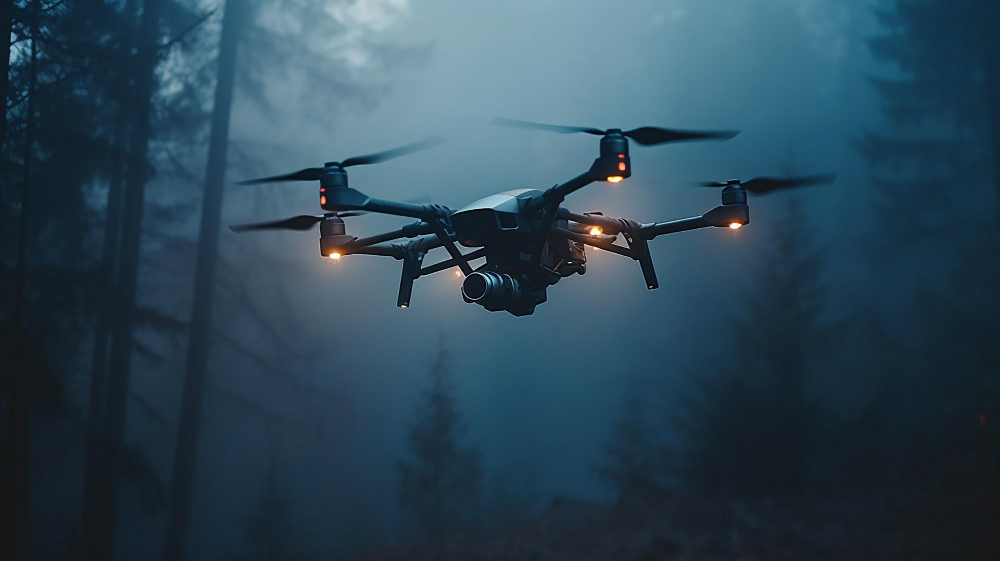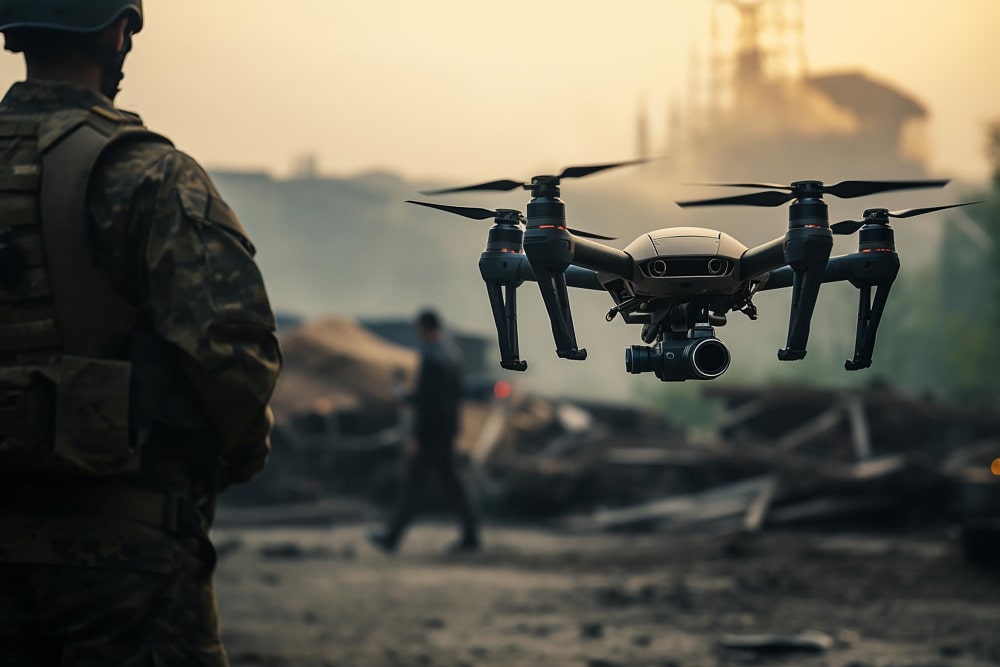In some past years, Drone technology emerged in the world and integrated into multiple industries in the world. Drones, also known as Unmanned Aerial Vehicles (UAVs). They are also changing the traditions and practices of construction industry. Drones have swiftly gained traction in construction because of their versatility, efficiency, and cost-effectiveness. This comprehensive blog post put light into the benefits, uses, and applications of drones in the construction industry, shedding light on their profound impact.
Evolution of Drones in Construction

The utilization of drones in construction marks a paradigm shift in traditional building processes. Initially employed for aerial photography, drones have evolved to become indispensable tools in construction projects. With advancements in technology, modern drones are equipped with high-resolution cameras, LiDAR sensors, and thermal imaging capabilities, facilitating precise data collection and analysis.
Benefits of Drones in Construction
Although there are a number of benefits of using drone technology in construction industry, we enlist some of them as following.
Cost Efficiency
One of the primary advantages of integrating drones in construction is their ability to reduce operational costs significantly. By automating tasks such as surveying and monitoring, drones streamline processes, eliminating the need for manual labor and expensive equipment.
Time Savings
Drones expedite project timelines by expediting surveying, mapping, and monitoring activities. Unlike traditional methods that are time-consuming and labor-intensive, drones can cover vast areas in a fraction of the time, allowing construction teams to make informed decisions promptly.
Safety Improvement
Safety is paramount in the construction industry, and drones play a pivotal role in enhancing job site safety. By conducting aerial inspections and identifying potential hazards from a distance, drones mitigate risks associated with manual inspections, thereby minimizing accidents and ensuring worker safety.
Uses of Drones in Construction

Surveying and Mapping
Drones revolutionize the surveying and mapping process by capturing aerial imagery and generating accurate topographic maps and 3D models. This enables construction teams to assess terrain, identify optimal building locations, and plan construction activities efficiently.
Site Inspection and Monitoring
Drones are instrumental in conducting comprehensive site inspections and monitoring progress throughout the construction lifecycle. Equipped with high-resolution cameras and sensors, drones provide real-time insights into project developments, enabling stakeholders to detect discrepancies and address issues proactively.
Progress Tracking
By capturing aerial footage and imagery at regular intervals, drones facilitate progress tracking and documentation. Construction managers can compare current site conditions with initial plans, identify deviations, and ensure that projects are on schedule and within budget.
Applications of Drones in Construction

Aerial Photography and Videography
Drones capture stunning aerial photographs and videos, offering unique perspectives of construction sites. These visual assets are invaluable for marketing purposes, stakeholder presentations, and project documentation, enhancing communication and transparency.
3D Modeling and Mapping
Using photogrammetry and LiDAR technology, drones generate high-fidelity 3D models and maps of construction sites. These digital representations enable precise measurements, volumetric analysis, and virtual walkthroughs, facilitating design validation and decision-making.
Thermal Imaging
Drones equipped with thermal cameras are utilized for detecting heat anomalies, moisture intrusion, and energy inefficiencies in buildings. Thermal imaging This technology helps spot problems related to structural defects and building performance issues earlier so they can be fixed quickly.
Integration of Drones with Construction Machinery
The integration of drones with construction machinery, such as bulldozers and cranes, enhances operational efficiency and automation. Drones equipped with artificial intelligence and machine learning algorithms collaborate with equipment to optimize resource allocation, monitor productivity, and ensure seamless coordination on-site.
Regulations and Challenges
The use of drones in construction is challenging because of rules and issues. Government regulations limit where drones can fly and raise privacy concerns. Additionally, drones have limited battery life and may struggle in adverse weather conditions, posing challenges to their deployment on construction sites.
Future Trends in Drone Technology for Construction

The future of drones in construction holds tremendous promise, with ongoing advancements in technology driving innovation and expansion. Emerging trends such as autonomous drones, swarm robotics, and AI-powered analytics are poised to revolutionize construction practices, ushering in an era of unprecedented efficiency, sustainability, and safety.
If you are interested to read about top 10 emerging technologies in construction industry, click here.
FAQs (Frequently Asked Questions)
1. Are drones widely used in the construction industry?
Ans. Yes, drones are increasingly being utilized in construction for various tasks such as surveying, mapping, inspection, and monitoring.
2. How do drones contribute to cost efficiency in construction projects?
Ans. Drones automate tasks, reduce the need for manual labor and expensive equipment, thereby lowering operational costs significantly.
3. What are the primary challenges associated with drone deployment in construction?
Ans, Regulatory complexities, technical limitations, and privacy concerns are among the key challenges hindering the widespread adoption of drones in construction.
4. What role do drones play in improving safety on construction sites?
Ans. Drones conduct aerial inspections, identify potential hazards, and enhance situational awareness, thereby minimizing risks and ensuring worker safety.
5. What are some future trends in drone technology for construction?
Ans. Autonomous drones, swarm robotics, and AI-powered analytics are some of the emerging trends anticipated to transform construction practices in the future.
6. How can construction companies integrate drones into their existing workflows?
Ans. Construction companies can integrate drones by investing in training programs, developing standard operating procedures, and collaborating with experienced drone service providers.
Conclusion
In conclusion, drones have emerged as a cutting-edge technology and game-changer in the construction industry, offering tremendous capabilities that redefine traditional building processes. From cost savings and time efficiency to improved safety and productivity, the benefits of integrating drones are undeniable. As technology continues to evolve, the role of drones in construction will only become more prominent, shaping the future of the built environment.

